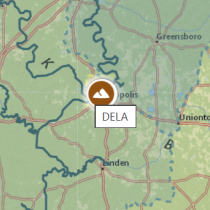NEON in Prototype
June 22, 2010
We've completed the reviews, written the documents, and the last item on our planning agenda is to await FY2011 Congressional budget approval for NSF funding to begin construction. So what’s next for NEON? In order to ensure NEON will run smoothly once the sites are built, we have to make sure all of our equipment and processes work well. NEON staff have begun to test plans, locations, and equipment to build the observatory and collect data, called prototyping. Conducting prototyping activities allows NEON to enter the construction phase with higher confidence, reduce potential risk, and efficiently execute a robust construction schedule. Some of the major prototyping activities occurring this summer into the fall are described below, and there are many more planned.
Fundamental Sentinel Unit (Organisms) Prototyping Activities FSU is conducting several prototyping activities this year, primarily to better understand sampling designs and sample workflows. Such activities include microbial soil sampling, insect sampling, vegetation mapping, and plant productivity. Microbial soil samples collected this summer, as well as samples taken in 2009, will be sent to several external labs for genetic and chemical analyses. The insect prototype includes field sampling for beetles and mosquitoes, expert taxonomic identification of samples, and DNA barcode development. FSU staff is working with contractors to produce standardized vegetation maps to aid in the design of sample plot locations. Staff will also be performing plant productivity measurements this summer in conjunction with Airborne platform prototyping activities to test field validation measurements (see Airborne Observation below for more details).
Fundamental Instrument Unit (Atmosphere and Soil) and Engineering Prototyping Activities This summer, FIU and Engineering teams are testing hardware integration and data flow management. In partnership with other teams, FIU is prototyping two types of sensors that will be used at a tower field site. The sensors will collect test data and test the integration of data processing algorithms to NEON cyberinfrastructure, as well as being tested for their performance and integration of carbon dioxide and water vapor measurements. In addition, engineering will test instruments that compare eddy covariance, monitor gas, and collect dust. NEON is currently testing a new prototype tower that will be the standard design across all of the NEON sites. The tower was erected at NEON’s new lab facility in Boulder. At this point, it is being used for prototyping equipment such as boom arm attachments, sensor mounts and equipment enclosures, as well as employee training, and equipment testing.
Airborne Observation Platform Prototyping Activities NEON will conduct a series of airborne flights in several areas in and around the Ordway-Swisher Biological Station in early fall to begin prototyping field and airborne measurement techniques and equipment, and study the associated data processing algorithms. NEON has partnered with NASA to deploy the AVIRIS airborne spectrometer (built and operated by the Jet Propulsion Laboratory), to collect high quality spectral test data. In addition, the National Center for Airborne Laser Mapping will test an airborne waveform LIDAR system to collect information on vegetation structure. Additional test data will be collected in the field and processed, such as the biophysical characteristics of vegetation and the measurement of key atmospheric variables.
Aquatic Prototyping Activities This summer, the Aquatic team is testing field sampling protocols and studying how incoming data will be managed. Prototype activities include collecting data on stream reaeration and discharge rating curves, water chemistry, and stream morphology. AQU is also visiting all NEON Aquatic and STREON sites to ensure the site is appropriate for data collection.
Cyberinfrastructure The Cyberinfrastructure team is partnering with several NEON teams this summer to test database and tracking methods. This includes conducting activities such as the following: (1) prototyping a beetle database and, with the FSU team, prototyping field data collection protocols in order to select and develop an appropriate set of mobile computing devices and software for field crews, (2) prototyping manufacturing workflow software for the Engineering department, (3) prototyping four Level 4 data products in partnership with the FIU and data products teams, and (4) prototyping an Education Web portal which will include widgets for different types of Web user interactions.
